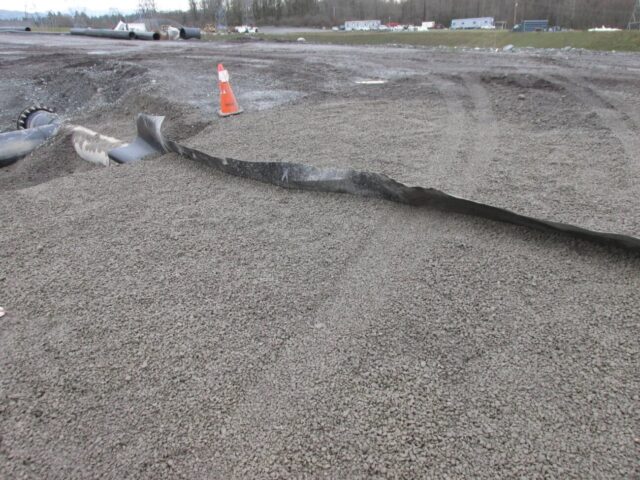
In an era where environmental protection and resource management have become paramount, the integrity of geosynthetic lining systems plays a crucial role in safeguarding our landscapes and water resources. These innovative materials are engineered to create barriers against leaks, making them indispensable in applications ranging from landfill management to wastewater containment.
Yet, despite their robust design, the risk of failure lurks beneath the surface, often going unnoticed until significant damage occurs. This is where electrical leak detection (ELD) steps in as a game-changing solution, offering a proactive approach that not only identifies potential breaches but also enhances the longevity and effectiveness of these essential systems.
As we delve deeper into the mechanics of ELD, we will uncover how this technology transforms the way we monitor and maintain geosynthetic linings, ensuring they perform at their best while protecting the environment from contamination and degradation. Join us as we explore the intricate dance between technology and sustainability in the quest for leak-free solutions.
Understanding Electrical Leak Detection Technology

Understanding Electrical Leak Detection Technology involves delving into a sophisticated yet essential method for safeguarding geosynthetic lining systems, which are critical in various industrial applications. At its core, this technology employs advanced electrical principles to identify even the slightest breaches in integrity, using conductive materials to create a virtual grid over the lining.
When these layers break down—whether from physical wear, chemical exposure, or environmental factors—this system detects anomalies by measuring variations in electrical resistance. Imagine a complex network of sensors that continually monitors the condition of the liner; the moment an irregularity arises, it triggers alerts, enabling swift responses to potential failures.
This proactive approach not only mitigates risks but also significantly prolongs the lifespan of the lining systems, ultimately safeguarding valuable resources and ensuring environmental protection.
The Importance of Leak Detection in Linings

Leak detection in linings is not merely a precaution; it is a critical element in preserving the integrity and longevity of geosynthetic lining systems. These linings, often deployed in vital applications such as landfills, reservoirs, or mining operations, serve as barriers against fluid migration, safeguarding the environment from potential contamination.
However, the threat of leaks looms large, with factors like pressure fluctuations and environmental stressors making vigilance essential. Early detection of leaks can prevent catastrophic failures, saving not just financial resources but also the ecosystem.
By employing advanced electrical leak detection methods, operators can pinpoint issues before they escalate, maintaining the functionality of the lining system and ensuring compliance with environmental regulations. This proactive approach fosters trust and reliability, underscoring the inherent value of rigorous leak detection protocols in geosynthetic applications.
How Electrical Leak Detection Works
Electrical leak detection operates on the principle of identifying unintended electrical paths that may arise due to insulation failure or other defects in geosynthetic lining systems. The process typically involves the application of a low-voltage electrical current through the system’s surface, which is monitored for any unexpected deviations in resistance.
When a leak occurs, this electrical current can escape through compromised areas, triggering alarms and indicating the precise location of the failure. Advanced systems leverage sophisticated sensors and telemetry to provide real-time data, allowing for immediate action to be taken.
This technology not only enhances the longevity of the lining systems but also safeguards the integrity of the underlying environment, ensuring that any potential contamination or resource loss is promptly addressed. Through a combination of meticulous electrical analysis and innovative sensor technology, the intricacies of electrical leak detection become an invaluable asset in protecting critical infrastructure.
Conclusion
In conclusion, electrical leak detection serves as a vital tool in safeguarding geosynthetic lining systems, ensuring their longevity and effectiveness in various applications. By identifying potential weaknesses and leaks early in the construction process, this technology significantly mitigates the risk of costly repairs and environmental damage.
Moreover, the integration of electrical leak detection into standard quality assurance practices enhances the overall reliability and performance of geosynthetic materials. As the construction industry continues to evolve, embracing innovative solutions like electrical leak detection will be instrumental in promoting sustainability and efficiency.
To learn more about assurance in construction, consider exploring further resources on the topic.



